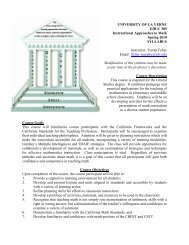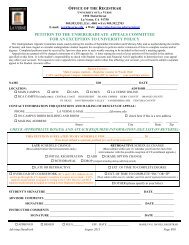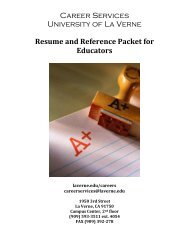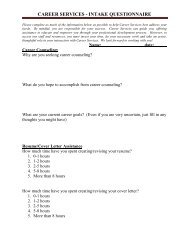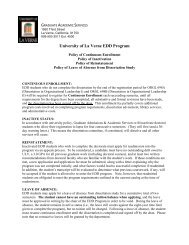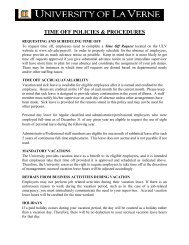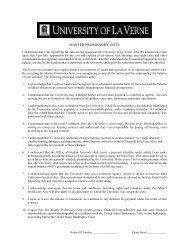College: Making It Happen - CaliforniaColleges.edu
College: Making It Happen - CaliforniaColleges.edu
College: Making It Happen - CaliforniaColleges.edu
Create successful ePaper yourself
Turn your PDF publications into a flip-book with our unique Google optimized e-Paper software.
California requires students to pass the California High School Exit Examination<br />
(CAHSEE) to earn a diploma. Be sure to monitor your child’s results on any test that<br />
could prevent him or her from graduating from high school.<br />
<strong>College</strong> Admissions Tests<br />
Your child is planning to attend college, so you’ll need to pay attention to tests that<br />
are usually required for college admission, such as the ACT with writing and SAT<br />
Reasoning Test. In addition, be sure that your child signs up to take the PSAT in<br />
September of the 8 th and 9 th grade year because it will help him or her prepare for<br />
the SAT in high school. Additionally, the PSAT is a key to national college search processes<br />
and scholarships.<br />
Many colleges and universities require that students take the SAT and/or ACT for<br />
the admissions process. The more times a child takes the PSAT, the greater the<br />
likelihood that he/she will be prepared for the SAT in high school.<br />
What else can I do to help my child achieve<br />
academically?<br />
• Create an academic plan with your child and his or her counselor for middle school<br />
that prepares your student to take college preparatory courses in middle and high<br />
school.<br />
• Become a knowledgeable and supportive partner in <strong>edu</strong>cational planning.<br />
• Attend the <strong>edu</strong>cation planning night at the middle school where local high school<br />
counselors present their programs and sch<strong>edu</strong>les.<br />
• While your child is still in middle school, visit the high school that he or she will be<br />
attending to meet members of the counseling staff and inform them that your child<br />
should be placed in a college preparatory sequence of classes.<br />
• Obtain the <strong>College</strong> Preparatory (“a-g”) course list from the high school your child<br />
will be attending or from the internet at www.UCOP/pathways.<strong>edu</strong>.<br />
• Using the college preparation course list for the high school, develop a tentative<br />
sch<strong>edu</strong>le of specific courses for all four years (see Your Future! Worksheet on<br />
pages 31–32 of this booklet).<br />
• Review this academic plan with your child’s counselor at least once a year.<br />
• Revise this college preparation plan each year with your child.<br />
• If you have access to a computer, have the child check out the High School<br />
Planner on California<strong>College</strong>s.<strong>edu</strong>. This is free of charge and can help you<br />
gauge your student’s success in meeting admission requirements.<br />
• Ensure that the school enrolls your child in a college preparatory sequence of classes.<br />
10<br />
• Monitor the academic progress of your child in these courses. Encourage your<br />
child to participate in academic enrichment programs offered at your school and




